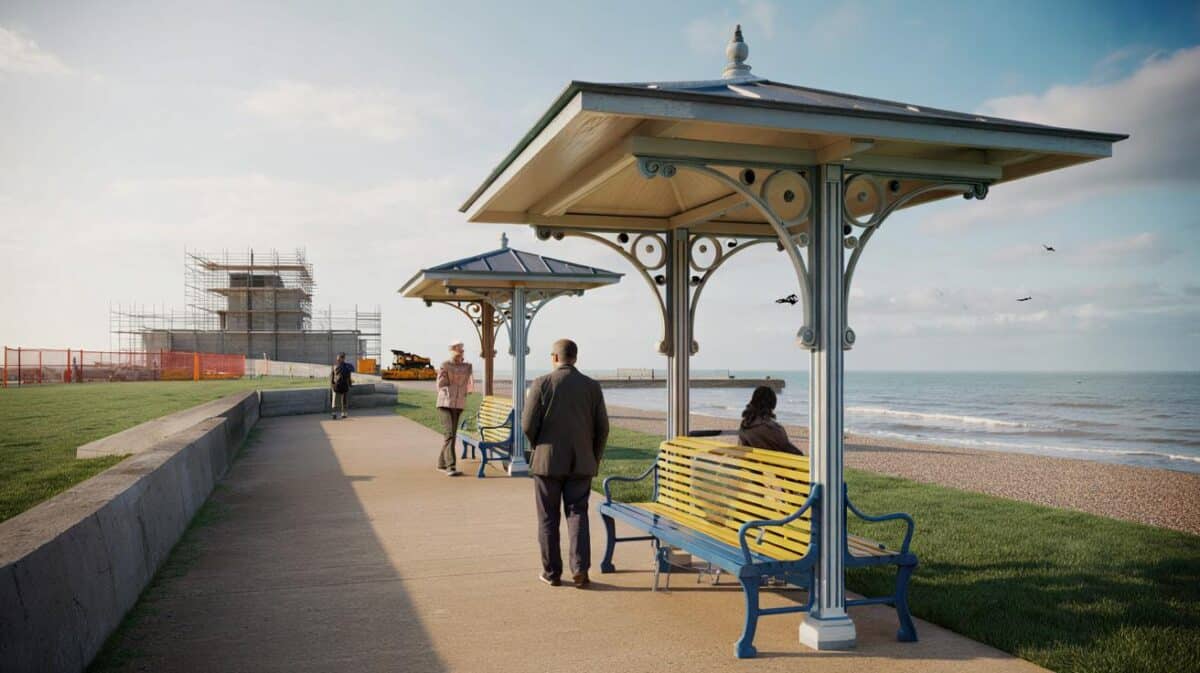For nine days from Saturday until 2 November, no trains will run between Tunbridge Wells and Hastings, or between Bexhill and Hastings, as Network Rail carries out a package of safety and reliability works. Southeastern and Southern services will be suspended on the affected sections, with rail-replacement buses and a series of ticket acceptance options in place.
What is shutting and when
The blockade runs for nine consecutive days, covering two busy commuter weeks and a full weekend. The focus sits on the Hastings line and the East Coastway approach into Hastings, both of which carry a high mix of commuters, students and leisure travellers.
| Date range | Section closed | Operators | Alternatives |
|---|---|---|---|
| Sat 25 Oct – Sun 2 Nov | Tunbridge Wells ↔ Hastings | Southeastern | Buses between stations; ticket acceptance via Ashford International |
| Sat 25 Oct – Sun 2 Nov | Bexhill ↔ Hastings | Southern | Buses between stations |
Trains will not run between Tunbridge Wells and Hastings, or between Bexhill and Hastings, from Saturday to 2 November.
Why the railway is closing
Network Rail plans to tackle several long-standing issues in one hit. Teams will repair tunnel brickwork at key pinch points, upgrade drainage to manage heavy rain, replace almost one kilometre of worn rail, and clear lineside vegetation to improve reliability and reduce leaf-fall delays as autumn bites.
Doing these tasks together reduces repeat closures and allows crews to work continuously rather than returning for multiple weekend possessions. The railway should see fewer speed restrictions and a more dependable timetable once the work bedded in.
How you can still travel
Replacement buses will link the closed sections, stopping at intermediate stations. Expect more time on the road and possible queues at busy times.
- Between Tunbridge Wells and Hastings: buses connect the line, calling at intermediate stops.
- Between Bexhill and Hastings: a shuttle bus operates throughout the day.
- Southeastern ticket acceptance: valid from Hastings and Ore to Ashford International, then on high-speed services to London St Pancras at no extra cost.
This Ashford and high-speed route will suit travellers heading for London or north Kent. Passengers bound for coastal towns west of Hastings should use Southern buses to rejoin trains towards Eastbourne, Lewes and Brighton.
Southeastern tickets are valid via Ashford International and on high-speed services to St Pancras during the works.
Expected journey times
Journey times will lengthen. A typical Tunbridge Wells–Hastings trip of about 50 minutes can stretch to 80–110 minutes by bus. Hastings–London with the Ashford and high-speed combination often takes 1 hour 50 minutes to 2 hours 15 minutes, depending on connections. Allow extra time for evening peaks and weekend shopping traffic.
Who is affected
The closure hits regular commuters on the Hastings line, college and school students returning after half-term, and day-trippers heading for the coast. Car parks and forecourts around key stations such as Tunbridge Wells, St Leonards Warrior Square, Hastings and Bexhill will feel busier as people switch to road travel or lifts.
Expect pressure on early-morning and late-afternoon buses on weekdays. Families and leisure travellers may find mid-morning or early afternoon quieter.
Ticketing, refunds and Delay Repay
Your rights remain the same during planned works. If you choose not to travel because of the closure, contact your retailer for refund rules on unused tickets. Season ticket holders can claim Delay Repay for qualifying delays on replacement buses and accepted routes; keep evidence of your journey time if possible.
Advance ticket holders may use alternative trains closest to the original time if services are diverted or retimed by the operator. Staff at stations will help revalidate itineraries where needed.
Accessibility and luggage
Rail-replacement buses vary by operator and vehicle type. Low-floor accessible buses run on most journeys, but capacity for wheelchairs, mobility scooters and pushchairs can be limited on individual departures. If you need boarding assistance, arrive early and speak to staff. Large luggage and bicycles are often restricted on buses; folding bikes are usually allowed if safely stowed.
What to do before you set out
- Check first and last bus times for your station; evening services can thin out earlier than trains.
- Arrive 15–20 minutes earlier than usual to secure a seat and make connections.
- Use the Ashford International route for London if you hold a Southeastern ticket from Hastings or Ore.
- Carry water and a phone charger; road traffic can delay buses.
- If you drive to a different station, allow for parking constraints and school-run traffic on weekdays.
What changes after 2 November
Once the blockade lifts, Southeastern and Southern aim to restore normal timetables. The renewed track should reduce fault-related delays, and the drainage upgrades should help during heavy rain. Freshly cleared vegetation improves signal sighting and traction in leaf-fall season, which tends to reduce braking issues and time losses.
Why nine days, not a few weekends
Railway teams can do more work in a continuous window than across several scattered weekends. Equipment stays on site, crews keep momentum, and testing can happen in a sequence rather than stop-start. For passengers, one longer interruption can mean fewer repeat closures later in the year.
A practical example for your commute
Consider a Monday morning trip from Hastings to London. Option one: bus to Tunbridge Wells, train to London Bridge, then onward; this risks two tight connections and heavy road traffic into Tunbridge Wells. Option two: train Hastings–Ashford International, high-speed to St Pancras, and tube or Thameslink; this adds miles but usually produces a steadier, predictable timing with step-free changes at Ashford and St Pancras. If you need the City, St Pancras to Bank takes around 20 minutes on the Underground when clear.
Looking ahead and reducing disruption next time
If you rely on these routes, build a contingency routine. Save an Ashford-based itinerary in your journey planner, note the best bus stops at your station, and consider flexible start times with your employer during the blockade. For school runs, try a trial bus journey this weekend to time the connection. Keep receipts for taxis or parking in case your employer reimburses necessary extra costs.
Weather can affect progress on drainage and vegetation jobs. If storms hit, some tasks may pause, which could alter bus schedules at short notice. Station teams will post updates on boards and make announcements. Where possible, aim for off-peak travel to maximise your chance of a seat and reduce connection stress.









Nine days, huh? Guess my bike’s getting promoted to regional transport manager. 🙂 Anyone know if folding bikes are okay on the replacement buses?